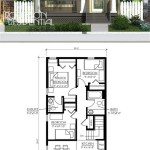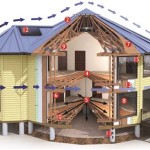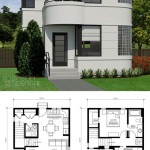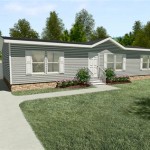Floor plans for small houses refer to architectural drawings that outline the layout and design of a residential structure with a limited square footage. These plans provide a detailed representation of the home’s rooms, hallways, stairs, and other interior spaces, as well as the placement of windows, doors, and fixtures.
Floor plans for small houses serve as blueprints for builders and homeowners, guiding them through the construction or renovation process. They help visualize the home’s flow and functionality, ensuring that all essential elements fit together seamlessly. For instance, a well-designed floor plan can optimize natural light, create a sense of spaciousness, and minimize wasted space in a small home.
Moving forward, this article will delve into various aspects of floor plans for small houses, including different types, essential considerations, and tips for maximizing space and creating functional living environments within a limited footprint.
When designing floor plans for small houses, several important points should be considered to ensure functionality and livability within a limited space:
- Maximize natural light
- Create open and airy spaces
- Utilize vertical space
- Choose space-saving furniture
- Incorporate multi-purpose areas
- Consider future expansion
- Prioritize storage solutions
- Seek professional advice if needed
By carefully considering these points, homeowners and architects can create small houses that are both comfortable and stylish, without compromising on functionality or livability.
Maximize natural light
Incorporating ample natural light into floor plans for small houses is crucial for creating a sense of spaciousness, reducing energy consumption, and enhancing overall well-being. Here’s how to maximize natural light in small house designs:
1. Position windows strategically: Place windows on multiple walls to allow light to enter from different directions. Consider installing large windows or skylights in areas where you want to create a brighter and more airy atmosphere, such as the living room or kitchen.
2. Use reflective surfaces: Incorporate light-colored walls, ceilings, and flooring to reflect and bounce natural light throughout the space. Mirrors can also be strategically placed to amplify light and create the illusion of a larger area.
3. Minimize obstructions: Avoid placing furniture or bulky objects in front of windows to ensure unobstructed light flow. Opt for sheer curtains or blinds that allow light to filter through while still providing privacy.
4. Consider passive solar design: Design the home to take advantage of passive solar energy by orienting windows towards the sun’s path. This allows natural light to penetrate deep into the house, reducing the need for artificial lighting during the day.
5. Incorporate outdoor spaces: Create a connection between the indoors and outdoors by incorporating patios, decks, or courtyards. These spaces not only provide additional natural light but also expand the perceived living area.
Create open and airy spaces
Creating a sense of openness and airiness in floor plans for small houses is crucial for maximizing the perceived space and enhancing the overall ambiance of the home. Here are some strategies to achieve this:
- Eliminate unnecessary walls: Open up the floor plan by removing walls that divide smaller rooms, such as between the living room and dining room. This creates a more spacious and inviting atmosphere.
- Use open shelving: Opt for open shelving instead of closed cabinets to allow light to pass through and make the space feel larger. This is particularly effective in areas like the kitchen or living room.
- Maximize ceiling height: High ceilings can make a small room feel more expansive. Consider vaulted or cathedral ceilings, or painting the ceiling a lighter color to create an illusion of height.
- Incorporate large windows and doors: Large windows and doors not only allow more natural light into the space but also visually connect the indoors with the outdoors, making the home feel more open and airy.
By incorporating these strategies, homeowners can create small houses that feel spacious, bright, and inviting, despite their limited square footage.
Utilize vertical space
Maximizing vertical space is essential in floor plans for small houses to create the illusion of height and increase storage capacity. Here are some effective ways to utilize vertical space:
- Install loft beds: Loft beds are a great way to save floor space while creating a cozy sleeping area. They are particularly suitable for children’s rooms or guest rooms.
- Build vertical storage units: Floor-to-ceiling bookshelves, cabinets, and drawers make excellent use of vertical space and provide ample storage without taking up valuable floor area.
- Use stackable furniture: Stackable furniture, such as nesting tables, ottomans, and stools, can be easily stored away when not in use, maximizing space utilization.
- Hang shelves and artwork: Wall-mounted shelves and artwork not only add visual interest but also free up floor space for other items.
By utilizing vertical space effectively, homeowners can create small houses that feel spacious, organized, and functional.
Choose space-saving furniture
Selecting the right furniture is crucial for maximizing space in small houses. Space-saving furniture is designed to minimize its footprint while still providing functionality and style.
1. Opt for multi-purpose furniture: Multi-purpose furniture, such as ottomans with built-in storage or coffee tables with drawers, can serve multiple functions, reducing the need for additional pieces and saving valuable floor space.
2. Choose furniture with a smaller scale: Furniture with a smaller scale, such as petite sofas, chairs, and tables, can make a room feel more spacious. Avoid oversized furniture that can overwhelm the space and make it feel cramped.
3. Consider vertical storage furniture: Vertical storage furniture, such as tall bookshelves, cabinets, and drawers, can help maximize vertical space and minimize clutter on the floor.
4. Use nesting or stackable furniture: Nesting or stackable furniture, such as nesting tables and stackable chairs, can be easily stored away when not in use, freeing up floor space and creating a more flexible layout.
By carefully selecting space-saving furniture, homeowners can create functional and stylish small houses that maximize every inch of available space.
Incorporate multi-purpose areas
Incorporating multi-purpose areas is a clever way to maximize space and increase functionality in floor plans for small houses. By designing spaces that can serve multiple purposes, homeowners can eliminate the need for dedicated rooms, creating a more flexible and efficient use of space.
- Create a home office in the living room: With the rise of remote work, many homeowners are seeking dedicated workspaces within their homes. However, in small houses, allocating an entire room for an office may not be feasible. By incorporating a desk or work area into the living room, homeowners can create a functional workspace without sacrificing a separate room.
- Utilize the kitchen island as a dining table: Kitchen islands are not just for food preparation; they can also serve as dining tables, saving valuable floor space. By choosing an island with an extended countertop or built-in seating, homeowners can create a casual dining area without the need for a separate dining room.
- Transform a guest room into a flexible space: Guest rooms are often used infrequently, making them ideal candidates for multi-purpose use. By incorporating a sofa bed or daybed, homeowners can create a space that can serve as both a guest room and a home office, library, or playroom.
- Combine the laundry room and mudroom: In small houses, every square foot counts. By combining the laundry room and mudroom into one space, homeowners can create a functional and efficient area for managing laundry and outdoor gear.
By incorporating multi-purpose areas into their floor plans, homeowners can create small houses that are both functional and stylish, without compromising on space or comfort.
Consider future expansion
When designing floor plans for small houses, it is important to consider the potential for future expansion. By planning ahead, homeowners can create a home that can easily adapt to their changing needs and lifestyle.
- Design a flexible floor plan: Opt for a floor plan that can be easily modified or expanded in the future. Avoid creating fixed walls or spaces that would limit future renovations or additions.
- Create a designated expansion area: Identify an area on the property where future expansion can occur, such as a backyard or an unused corner of the house. This will provide a clear direction for future growth.
- Incorporate modular components: Use modular components, such as prefabricated units or room additions, that can be easily added to the house as needed. This provides a cost-effective and flexible way to expand the home.
- Consider vertical expansion: If the footprint of the house is limited, consider expanding vertically by adding a second story or attic conversion. This can provide additional living space without sacrificing outdoor area.
By considering future expansion in the initial design phase, homeowners can create a small house that can grow and adapt alongside their needs, ensuring a comfortable and functional living space for years to come.
Prioritize storage solutions
Incorporating adequate storage solutions is crucial for maintaining a clutter-free and organized small house. By prioritizing storage during the design phase, homeowners can create functional and efficient spaces that maximize every inch of available area.
Utilize vertical space: Vertical storage solutions, such as tall bookshelves, cabinets, and drawers, are ideal for small houses as they take advantage of unused vertical space. Floor-to-ceiling storage units can provide ample storage capacity without taking up valuable floor area.
Incorporate built-in storage: Built-in storage, such as drawers under beds, window seats with hidden compartments, and pull-out pantries, can create additional storage space without compromising on aesthetics or functionality. These built-ins can be customized to fit specific needs and spaces, maximizing storage potential.
Choose multi-purpose furniture: Multi-purpose furniture, such as ottomans with built-in storage or coffee tables with drawers, can serve multiple functions while providing additional storage space. These pieces can help reduce clutter and keep frequently used items organized and easily accessible.
By prioritizing storage solutions and implementing these space-saving techniques, homeowners can create small houses that are both functional and stylish, without sacrificing comfort or organization.
Seek professional advice if needed
When designing floor plans for small houses, seeking professional advice from an architect or designer can be highly beneficial. These professionals possess the expertise and experience to optimize space utilization, create functional layouts, and ensure structural integrity.
Expertise in space planning: Architects and designers have in-depth knowledge of space planning principles and techniques. They can help homeowners maximize every square foot of their small house by creating efficient layouts that minimize wasted space and maximize functionality.
Understanding of building codes and regulations: Professionals are well-versed in building codes and regulations, ensuring that the floor plans comply with all necessary safety and accessibility standards. They can guide homeowners through the permitting process and ensure that the design meets all legal requirements.
Access to design software and resources: Architects and designers utilize specialized software and resources to create detailed and accurate floor plans. These tools allow them to visualize the design in 3D, identify potential issues, and make informed decisions.
Furthermore, professionals can provide valuable insights into the latest design trends and innovative storage solutions, helping homeowners create small houses that are both stylish and functional.










Related Posts








